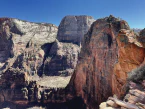Discover Earths Top Ten Natural Wonders

A Grand Tour of Earth’s Natural Wonders
When it comes to travel, bigger is often better. From towering mountains to expansive caves, our planet offers countless awe-inspiring natural wonders. Let’s embark on a virtual journey around the globe to explore the ten largest natural wonders that you must see in your lifetime.
Sundong Cave: A Subterranean Paradise
Imagine a cave so massive it could house an entire New York City block, skyscrapers included. Located in Vietnam, Sundong Cave’s main passage measures a breathtaking 650 feet high, 500 feet wide, and three miles long. This natural behemoth features a sunlit garden where the roof has caved in, creating a unique microcosm with its localized weather system. The cave’s limestone chambers are adorned with the world’s tallest stalagmites, which reach a stunning height of 260 feet. While adventurous travelers may venture through an organized tour, virtual tours are also available for those who wish to explore from afar.
Miragongo Volcano: A Fiery Spectacle
In the heart of the Democratic Republic of Congo roars the world’s largest lava lake inside the Miragongo Volcano. Prior to its eruption in 1977, this churning inferno measured 2,000 feet deep. Its lava is so fluid that during eruptions, it can hurtle downhill at 60 miles per hour, obliterating everything in its path. Although not a journey for the faint-hearted, daring adventurers can trek to the volcano’s caldera, where the glow of the bubbling lake lights up the mountain summit with an otherworldly glow.
Uluru: Australia’s Majestic Monolith
Standing majestic in the Northern Territory, Australia, Uluru, also known as Ayers Rock, is not just a rock; it’s a revered landmark for indigenous Australians, and truly colossal in scale. This sandstone monolith rises from the flat scrubland like the spine of a subterranean creature. Visitors are treated to a visual feast as the rock changes color during sunrise and sunset, transforming into a vibrant red. Although some may argue that Mount Augustus in Western Australia is larger, it’s technically an asymmetrical anticline, making Uluru the undisputed champion in the monolith category.
General Sherman: The King of the Forest
California’s redwoods are known for their incredible size, but General Sherman, a giant sequoia, dwarfs them all. Although not the tallest, General Sherman claims the title of the largest tree in terms of wood volume, towering 275 feet from the forest floor. This testament to nature’s grandeur has stood for over two millennia, steadily growing as the centuries pass.
Salar de Uyuni: Bolivia’s Mirror to the Sky
Stretching over 4,000 square miles, Salar de Uyuni is the world’s largest salt flat. When rainfall transforms the endless white surface into a mirror-like expanse, it gives the illusion of walking through the sky or striding atop water. This surreal landscape is home to flocks of flamingos, their pink plumage contrasting brilliantly against the endless white and blue.
The Amazon River: A Lifeline Through the Jungle
As the world’s largest river, the mighty Amazon wends its way through Peru, Colombia, and Brazil. It nourishes the world’s largest rainforest, a hotbed of biodiversity teeming with an unparalleled variety of plant and animal species. A riverboat journey is a perfect way to immerse oneself in this rich ecosystem, gliding past traditional villages, and spotting wildlife like sloths, caiman, and monkeys.
Mount Everest: Reaching for the Skies
Mount Everest, standing over 29,000 feet high in the Himalayas, is the highest mountain above sea level. Its majesty inspires awe and humility alike. Every year, thousands make the challenging trek up to South Base Camp, with some pushing further to conquer nature’s ultimate challenge. Even from afar, Everest remains a powerful symbol of nature’s might and human tenacity.
Angel Falls: The World’s Highest Waterfall
Situated in Venezuela’s Kanema National Park, the world’s tallest waterfall, Angel Falls, cascades over 2,600 feet down the side of a tabletop mountain. While it may not rival the size of Victoria Falls when considering both height and width, the sight of water thundering past misty clouds and plunging into the river below is an undeniably spectacular sight.
The Great Barrier Reef: A Subaqueous Rainbow
Visible from space, the Great Barrier Reef, stretching over 1,400 miles and composed of nearly 3,000 reefs, is the world’s largest structure of living organisms. This vibrant underwater world supports an astounding number of species, both plant and animal. Due to the impact of climate change, this natural wonder may not endure forever. For now, though, it remains one of the most popular tourist destinations in the world.
The Great Migration: Nature’s Grandest Parade
Witnessing the Great Migration in Tanzania and Kenya is akin to watching a living, breathing natural wonder. Each year, 1.5 million wildebeests, half a million gazelles, and a quarter of a million zebras embark on a perilous journey, traversing from south to north in the Serengeti, braving predators to reach greener pastures. This sight of millions of herbivores marching in unison is the largest terrestrial animal migration on Earth, offering an unforgettable spectacle of life in the wild.
So, do you agree with our selection?
Conclusion
As our exploration draws to a close, we are reminded of the diverse splendors our planet has to offer. From the subterranean beauty of Sundong Cave to the celestial spectacle of Salar de Uyuni, we are consistently awed by nature’s grandeur and innovation. These wonders serve as compelling reminders that our Earth is not merely a static rock floating in space but a vibrant, dynamic world teeming with extraordinary spectacles.
In many ways, our planet is a living testament to the grandeur of natural processes. Every moment, from the roiling lava of the Miragongo Volcano to the serene pace of the Amazon River, contributes to a greater narrative of constant evolution and staggering toughness. These wonders, regardless of their individual features, share a common thread – they inspire in us a sense of awe, a connection to the past, and hope for the future.
Interestingly, these natural wonders also serve as stark reminders of our role as stewards of the Earth. The fading grandeur of the Great Barrier Reef underscores the urgency of our environmental commitments. We are reminded that our actions, as a global community, hold immense consequences for these natural sites. Therefore, our admiration for these wonders should go hand in hand with a responsibility to protect them for future generations.
But even as we strive to protect these marvels, they continue to offer us priceless gifts. The sight of the Great Migration in Tanzania and Kenya, for example, offers a profound lesson in perseverance and survival. Meanwhile, the tranquil calm of the General Sherman Tree, standing firm through millennia, serves as a reminder of the enduring strength that lies in stillness.
In the end, exploring these wonders, whether in person or through the written word, is an adventure of a lifetime. As we marvel at the spectacle of Angel Falls or the majesty of Mount Everest, we are drawn into a deeper understanding of our place in the world, our relationship with nature, and our collective journey as inhabitants of Earth. It is an encounter that leaves us humbled, awed, and eager for the next chapter of discovery in our beautiful, ever-changing world.
What is the best time of the year to visit Sundong Cave?
The best time to visit Sundong Cave in Vietnam is from November to March. During this period, the weather is usually dry and cooler, which makes exploring the cave more comfortable and safe. However, it’s worth noting that tour availability may vary depending on local weather conditions and conservation efforts.
Is it safe to visit the Miragongo Volcano?
While the Miragongo Volcano in the Democratic Republic of Congo is an active volcano, tours to the caldera are generally considered safe as long as they are conducted under the supervision of experienced guides and with proper safety equipment. However, potential visitors should always stay updated with the latest travel advisories and local news before planning their trip.
How can I best experience the Great Migration in Tanzania and Kenya?
The best way to witness the Great Migration in Tanzania and Kenya is through a guided safari. These safaris often offer a range of options, from luxury lodges to basic campsites, and can provide local expertise to help you find the best viewing locations. However, it’s crucial to remember that the exact timing and location of the migration can vary depending on rainfall patterns.
What is being done to protect the Great Barrier Reef?
Multiple efforts are being made to protect the Great Barrier Reef, including minimizing pollution, controlling crown-of-thorns starfish outbreaks, and improving the quality of water entering the reef. Moreover, scientific research is ongoing to increase our understanding of the reef’s ecosystem and to develop more effective conservation strategies. Despite these efforts, the reef is still under significant threat from climate change and it’s crucial for us all to do our part to lessen this.
What makes Uluru a sacred site for indigenous Australians?
Uluru, or Ayers Rock, holds profound spiritual significance for the Anangu people, the indigenous inhabitants of the area. They believe that the rock was created by their ancestors, spiritual beings who left behind stories, rituals, and laws which are integral to their cultural identity. This connection is maintained today through rituals and ceremonies performed at various sites around Uluru, and visitors are asked to respect these traditions when visiting.
















